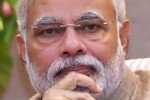By G.SrinivasanThe dramatic plunge in the global crude oil price from a high of 111 dollars a barrel in June 2014 to its lowest level of 45 dollars on January 13 awhile, registering nearly 60 per cent tumble in a shot span of a few months was unprecedented in the more than half a century annals of the world’s much-feared commodity cartel, the Organization of Petroleum Exporting Countries (OPEC).With global economic recovery not gaining substantial momentum across the continents to ensure higher energy consumption even at reduced growth prospects, no one is sure as to how far the crude oil price will go down or how long it will take to balance demand-supply mismatch so that prices can regain lost or losing ground.Energy experts recall that the diminution in OPEC’s omnipotence could be traced to 1985 when Britain’s North Sea and the US Alaskan oil flooded the global oil market, resulting in a shift from monopolistic to competitive pricing.But that period petered out in 2005 when escalating Chinese energy demand triggered off a temporary global oil paucity, letting OPEC’s price ‘discipline’ weapon to get redeployed to the detriment of oil-importing emerging economies such as ours.But in recent years particularly after the financial crisis of 2008 when the global economy in general and the advanced countries in particular suffered low or no growth, the world’s fossil fuel energy demand fell woefully short of supply.Add to that, the United States was able to succeed in the production of shale oil which has begun to play a key role when small and medium-sized producers in the US successfully thrashed out in 2009-10 as to how to apply to oil production the techniques of horizontal drilling and hydraulic fracturing that had already been spectacularly successful for natural gas.As a result, US oil production soared from about five million barrels a day (mb/d) in 2008 to 9.1 mb/d in December 2014.In sum, the reasons for the steep drop in crude prices owed itself to a host of favorable factors that covered among others, growing supply from non-OPEC countries, particularly the US, a halting recovery in global demand and Saudi Arabia’s resoluteness not to continue acting as OPEC’s and the world’s swing producer, particularly when the US production threatens to outrun the Kingdom’s substantial and substantive share in the global oil market.The International Monetary Fund (IMF) is of the view that “overall, lower oil prices due to supply shifts are good news for the global economy, obviously with major distribution effects between oil importers and oil exporters”.But with the share of oil consumption in GDP that determines the energy intensity being high at 7.5 per cent in heavily oil-importing countries such as India and Indonesia, against 5.4 per cent in China and 3.8 per cent in the United States, the authorities may have to keep an unrelenting vigil to avert the painful possibility of how the lower crude prices would work its way into retail inflation if the consumption of oil also goes up on a faster clip.Already, the pump prices of petrol and diesel in the country had fallen sharply. While petrol prices are now Rs 12.27 per litre lower than August last, diesel prices were down Rs 8.46 a litre since October with another round of cuts expected in mid-January. Lest the persistent fall would accelerate pent-up demand for non-renewable and import-intensive fuel like crude oil and its derivative products, the authorities are cautious in calibrating the requisite adjustment in whatever feasible manner they can under the new dispensation of decontrol of prices of petrol and diesel.That is partly the reason why the government effected hike in excise duty during November and December in two tranches in 2014 to mop up a huge Rs 10,000 crore in the remaining part of the current fiscal in a bid to shore up its revenue to meet the budget deficit without burdening the consumer but by making the oil marketing companies (OMCs) to take the tab.Ever since the decontrol of the prices of petrol first and diesel later, OMCs were given the elbow-room to adjust selling price of petrol and diesel on import parity cost to leave them with some leeway to help upstream (production) companies to invest more in exploration and production so that domestic supply of oil and natural gas could also gather traction.This is particularly important because persistently lower oil prices might reduce exploration and production spending and heighten risk for offshore oil companies.Energy analysts argue that if the government is able to keep in leash any abrupt upsurge in oil consumption close on the heels of its drastic price fall in the global market for the past several months by fostering diversified sources for energy, it can also build a strategic reserve for energy security in the event of future spike in crude prices which are likely given the geopolitical stark realities in West Asia and non-OPEC producers such as Russia.Already, the Government of India, through Indian Strategic Petroleum Reserves Ltd (ISPRL) is setting up strategic crude oil reserves with storage capacity of 5.33 million tonnes at Visakhapatnam, Mangaluru and Padur.In order to bolster the strategic crude oil storage capacity, ISPRL through Engineers India Ltd, has prepared a detailed feasibility study for construction of additional 12.5 million tones of strategic crude oil storage in Phase II at Bikaner, Rajkot, Chandikhol and Padur. Using the extant soft global crude prices, the construction of oil storage caverns need to be fast-tracked so that storage capacity is suffice for securing energy security.As they say the best time to fix the roof is when sun shines and so is the best time to build supply stocks is now and here when imported crude price is cruising downhill for a few more months.Since the country had been spending precious foreign exchange of the massive order of 160 billion dollars annually on oil imports, the soft crude price now prevailing in the global market would enable India to save at least 50 billion dollars in a year, provided there is no massive import volume to cater to the insatiable appetite for oil by domestic users, individuals as well as industry.Alternatively, the authorities could broad-base recovery techniques in the existing oil wells of national oil companies such as ONGC, OIL and GAIL, both onshore and offshore, making ample use of the slack in the oilfield service companies (OFS) which must perforce have to renew contracts on their existing rigs at markedly lower rates. This is also an opportune time for upstream oil companies to aggressively step up production of oil and gas.It is no wonder that Secretary, Ministry of Petroleum and Natural Gas, Mr.Saurabh Chandra told a partnership summit under the umbrella of CII and the Ministry of External Affairs recently that the government is working on a renewed bid to promote exploration activities in the country’s oil and gas sector.He said in the last couple of months, the government has taken several steps to augment “activities in exploration including a reassessment of the hydrocarbon potentials in the country, putting in place a plan to survey all sedimentary basins at a cost of Rs 6000 crore and framing a transparent extension policy for the pre-NELP (New Exploration Licensing Policy) fields”.Alongside, using the drastic cut in oil import bill due to the decline in crude oil prices, the country should seize the opportunity to step up generation of renewable energy as this promises to stem, if not stop the massive drain on foreign exchange reserves entailed in the import of oil, gas and coal.The current installed renewable capacity will need to go and grow manifold for the country to move to 15 per cent of energy by 2020.As the initial cost of funding these unconventional sources of energy such as solar, wind, water and biomass are quite expensive with their sale price for users pegged quite high, efforts need to be stepped up by the authorities of the Ministry of Non-Conventional & Renewable Sources of Energy to redouble the gains from this source of unpolluted energy for ecological balance and to keep India’s eco system undefiled by noxious fuels.The Prime Minister Mr.Narendra Modi’s ambition of building 100 smart cities cannot be easy in the absence of due focus on fostering alternative transportation fuel options that range from gas, ethanol, methanol to suitable electric power at a time when crude oil prices are on the wane and offering immense possibilities to explore and exploit.With over 70 per cent of the consumption being diesel, the highly-polluting and costly fuel, by the transportation sector mostly heavy duty trucks crisscrossing the country, it is time India plumped for introducing more and more flexi-fuel vehicles that are run on a medley of compressed natural gas, diesel, ethanol, petrol and methanol. For home consumption of electricity too, the time has come to go in for conserving precious power by opting for LED bulbs with the Prime Minister Mr.Modi recently launching a scheme for LED bulb distribution under Domestic Efficient Lighting Programme (DELP) and a National Programme for LED-based Home and Street Lighting.The country needs more such initiatives to solve Its myriad energy needs capitalizing on the recent bonanza being bestowed upon us by the fortuitous fall in the global crude prices, energy experts assert. There is synergy in energy if only we use innovation and ingenuity.(PIB Features)G.Srinivasan is a free-lance journalist based in New Delhi and can be contacted at geeyes34@gmail.com
January 19, 2015
Breaking News:
- Fresno County man sentenced to 29 years for sexually assaulting children, dog
July 27, 2024, 2:07 am - NASA just scored a badly needed win: The best potential evidence of alien life yet
July 26, 2024, 11:57 pm - Can You Guess What Percent Of People Have $500,000 Saved For Retirement? Shockingly, It's Probably Less Than You Think
July 26, 2024, 8:15 pm - The attempted assassination of Donald Trump: A 3D reconstruction
July 26, 2024, 7:55 pm - Alison Chao’s father arrested by Monterey Park police
July 26, 2024, 7:16 pm - Dog found inside plastic tote near dumpster during extreme heat wave in Las Vegas
July 26, 2024, 6:46 pm - Boeing asks suppliers for decade-long titanium paper trail as check for forgeries widens
July 26, 2024, 6:12 pm - Bill Ackman’s own hedge fund is asking investors to ignore what he says
July 26, 2024, 5:08 pm - ‘At a loss for words’: Families must move out as nearly 200 more condos are deemed unsafe
July 26, 2024, 5:03 pm - 'Awfully weird': Trump 'absolutely' regretting picking JD Vance
July 26, 2024, 3:02 pm
















